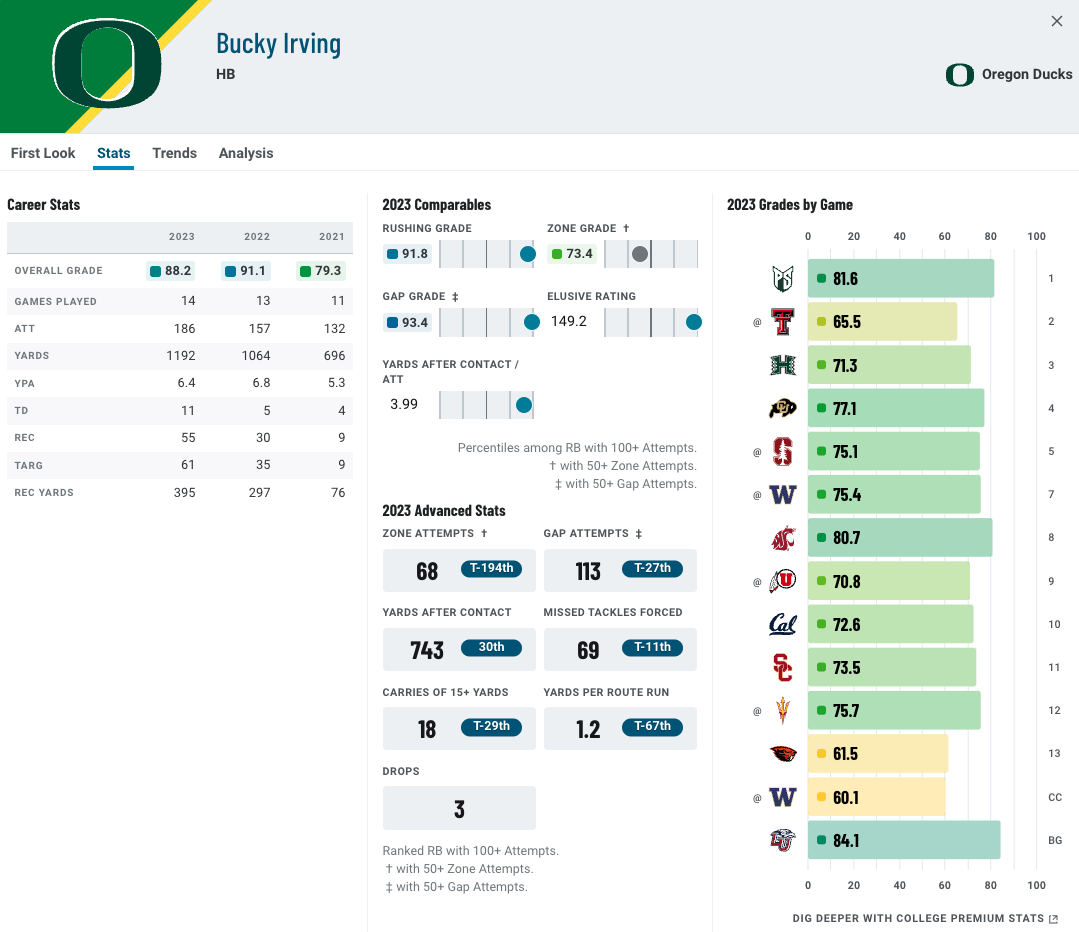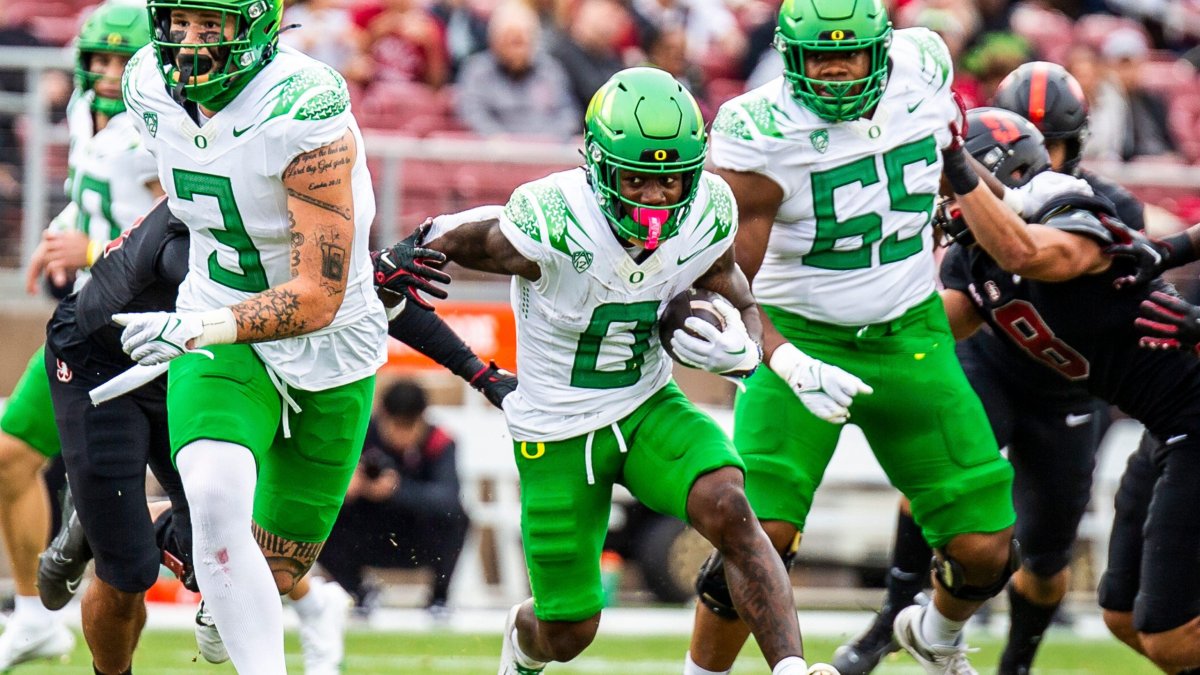The 2024 NFL Draft is fast approaching. The PFF big board is live, mock draft season is in full swing and the 2024 NFL Scouting Combine has wrapped up.
This year’s running back class has excellent depth and many different skill sets that NFL teams will covet. Texas’ Jonathon Brooks, Michigan’s Blake Corum and Tennessee’s Jaylen Wright lead this diverse class and will look to become immediate contributors in the NFL.
Let's look at Oregon‘s Bucky Irving, who earned a PFF grade above 79.0 in all three of his college seasons.
Click here for more draft tools:
2024 Mock Draft Simulator | 2024 Big Board | 2024 Draft Guide
2024 Player Profiles | 2024 Mock Drafts | NCAA Premium Stats
SCOUTING SUMMARY
Bucky Irving‘s compact build gives way to his most alluring trait: balance. His ability to run through arm tackles and bounce off bigger hits can give him a long career in the NFL.
He doesn't have great long speed and won't be outrunning anyone at the sideline, but his footwork is quick, controlled and balanced. His burst is appropriate for his game. He also has very reliable hands out of the backfield, though his pass protection abilities are unreliable.

WINS ABOVE AVERAGE
WAA represents the number of wins a player is worth over an average college football player and is a metric that evaluators can utilize to assess performance. It combines how well a player performed in each facet of play (using PFF grades) and how valuable each facet is to winning football games. The result is a first-of-its-kind metric that allows for cross-positional valuation and predicts future value at the player and team levels.
Irving’s Wins Above Average (WAA) since 2021.
HOW IRVING RANKS IN THE STABLE METRICS
Running back is perhaps the most dependent position in all of football, as most rushing production comes from the quality of the run blocking, the box count and, subsequently, the quality of the passing attack.
If looking to separate running backs, the best way to do so is by isolating them from their teammates and identifying how much they can create yardage on their own. While rushing grades and output are far less stable than other metrics, running backs must make defenders miss, create yards after contact or contribute in the passing game to maximize their value. Running back yards per route run is one of the most stable metrics when projecting value from year to year.
Scheme fits are incredibly important when it comes to running back, and grades in each scheme provide context to what situation they would be most successful in.
Irving put up excellent metrics in the most predictive of data subsets.
Irving’s slight frame might scare away some teams, but his ability on the field doesn’t reflect that. Despite measuring 5-foot-9 at the NFL combine, Irving holds the fifth-highest rushing grade among all running backs over the last three years.
His ability to make defenders miss is unmatched. While he benefitted from a very good offensive line at Oregon, he averaged 0.36 missed tackles forced per attempt and racked up 1,811 yards after contact in his career.
IRVING’S PROJECTIONS
Here are Irving’s rookie-year rushing projections for yards per carry and yards after contact per carry.
Let’s look at Irving’s receiving projections for yards per reception and completion percentage in the average passing offense.
BOTTOM LINE FROM PFF's 2024 NFL DRAFT GUIDE
Irving might not have the look of a running back that teams will automatically covet, but his tape shows an incredibly efficient player in both the run and passing games.




 © 2025 PFF - all rights reserved.
© 2025 PFF - all rights reserved.